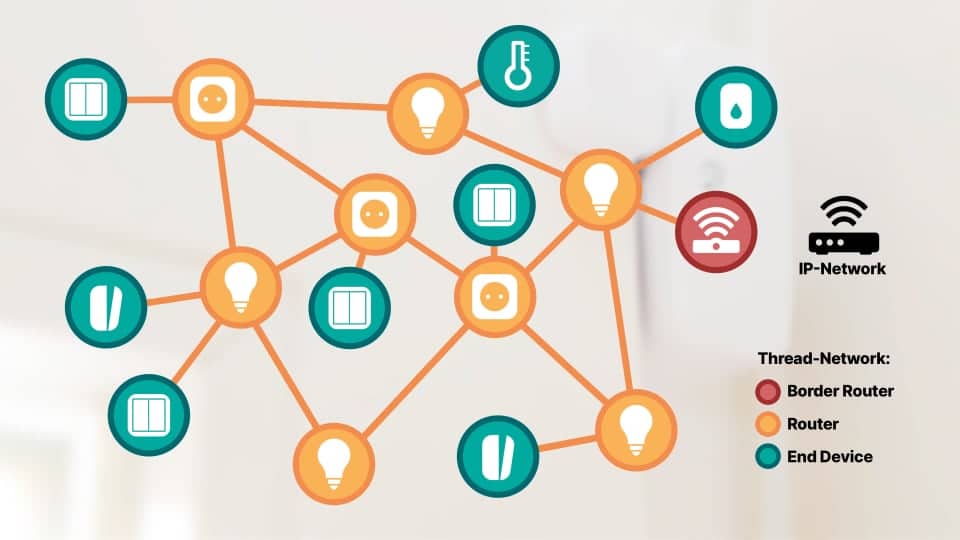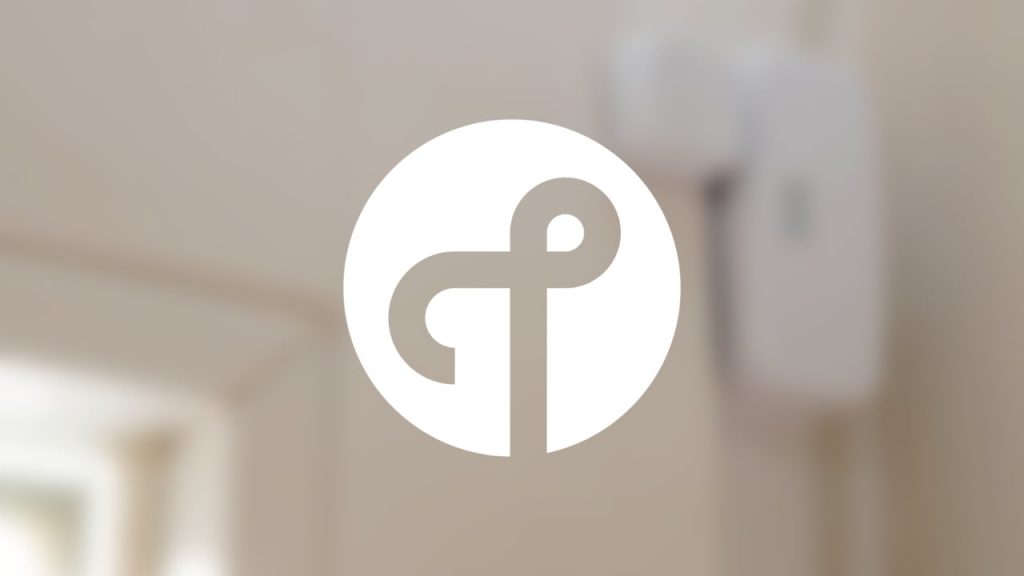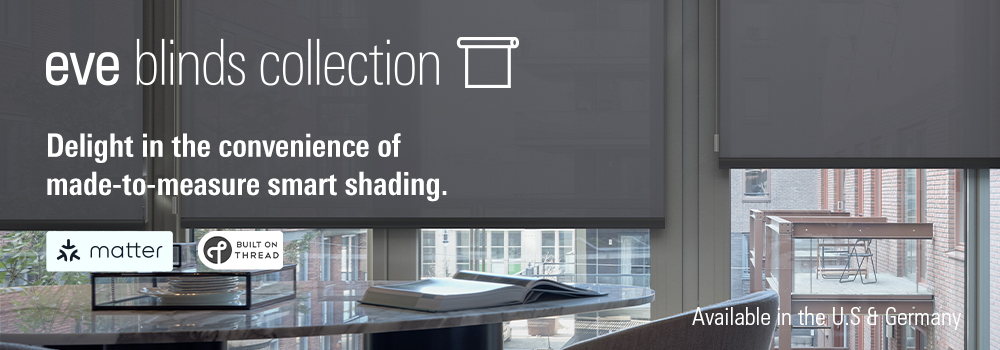The Thread wireless protocol is one of the technical pillars of the upcoming smart home standard Matter. Devices will use it to establish a stable radio network in the home that is self-amplifying and requires little energy. Battery sensors won’t be the last to benefit from this (read more about the benefits of the Thread protocol).
Thread 1.3 enables Matter
Preparing for the Matter launch in the fall, the Thread Group has now enhanced the protocol. The manufacturer alliance is thereby creating the conditions for smooth operation of the devices. Version 1.3.0 of the wireless protocol is backward compatible with its predecessors and enables full IP routing and service discovery in the network. As a result, Matter end devices should be able to use any certified thread border router to connect to the smart home in the future.

Border routers establish contact between Thread devices and the IP network at home. Products like Apple’s HomePod mini, a Google Nest Hub, and some Wi-Fi mesh systems from Amazon’s Eero series can serve as border routers theoretically. However, it is as yet unclear whether they will also perform this task across manufacturers in Matter.
The reason: Currently, Thread installations are mostly closed events. Apple, for example, requires a HomePod mini as a border router in HomeKit. Other products from Amazon or Google cannot be used for this purpose. They do not even appear in the network. Even active supporters of Matter are partly critical of this. George Yianni from Signify, for example, is concerned about how open Thread will really be in the end (see interview: “We don’t have plans to build Thread light bulbs”).

More compatibility and performance
This could change now: With Thread 1.3.0, border routers should “appear like any other Wi-Fi device on the network. They can be reached via IP and can discover services using mDNS,” says the Thread Group in its press release (link). The new iteration is also said to make it easier to update firmware over the network. Thread 1.3 enables simultaneous updates of installed devices without impacting responsiveness of controls or timeliness of event delivery, the developers promise. In other words a software update in the background should not negatively affect the reaction of the smart home system or the execution of commands.
Share this information:


